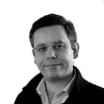How do turbos work?
Turbochargers are common in modern cars, but how do they actually work?
The word ‘turbo’ might conjure up images of sporty, high-end performance cars with blisteringly quick acceleration, but in more recent times turbochargers have become commonplace in even the most mainstream models.
The recent boost in the popularity of the turbocharger is thanks to its ability to increase engine efficiency and fuel economy. You may have heard of Ford’s EcoBoost or Volkswagen’s TSI engines which use a turbo to bump up the performance of smaller engines. This makes them feel bigger in terms of performance, but with lower running costs and emissions. Nearly all modern diesel engines are turbocharged to increase power where they might ordinarily lack it.
Whether it’s used to achieve wild performance figures in sports cars and supercars, or to improve the efficiency of superminis and mainstream family cars, what does a turbo do, how does turbocharging work and what is the difference between a turbocharger and a supercharger?
Turbo explained
Think back to your school physics lessons and the ‘fire triangle’ of fuel, heat and air. Increase one of these factors, the theory goes, and you increase the size of the fire.
A turbo is a big fan blowing extra air into the engine – it’s that simple. Inside a car’s engine, thousands of small, controlled fires are ignited and extinguished every second. When you press the accelerator you increase the amount of fuel in that fire, therefore making a bigger fire and producing more power.
The heat side of the fire triangle can’t really be increased, because petrol can’t get any hotter – it ignites and turns to gas above a certain temperature (this is the principle on which internal combustion engines operate) so there’s no room for improvement there.

As far as increasing the amount of fuel in the triangle, there’s a limit to how much fuel can safely be injected into an engine before those carefully controlled fires become uncontrolled. Manufacturers can make bigger engines that burn more fuel and therefore make more power – providing a faster car – but larger engines cost more money to make, use more fuel and take up more space under the bonnet.
Air – the last remaining factor in the equation – offers a solution: increase the amount of air in the fire triangle and you’ll have a bigger fire. Anyone who’s ever been camping knows blowing on a fire helps it along. This is where the common-or-garden turbocharger comes into play.
In a turbocharged system, exhaust gases pass through a small fan or ‘turbine’ as they leave the engine at incredible speed (around 250,000 revolutions per minute.) This spins another turbine on the opposite side of the turbo which sucks fresh air into the engine. This extra air – combined with the heat from the spark plugs and the fuel the engine runs on – makes a bigger, more powerful explosion, as it must, according to the principles of the fire triangle. It also allows the engine to burn more fuel, as the air and fuel mixture is compressed more by the turbo.
While turbos have been used in the past to massively increase the power figures of high-performance variants of cars, recent trends have opted for turbocharging as a means to reduce the overall size of a car's engine. This means it’s capable of producing the same power expected of a larger, non-turbocharged engine but with the benefits of better fuel economy and lower emissions produced by a smaller one.
How does a supercharger work?
Superchargers work on the same principle as turbos: they force more air into a car’s engine, allowing for bigger explosions and more power. The main difference between turbochargers and superchargers is that while turbos are powered by the engine’s exhaust gases, superchargers are driven by the engine itself: a supercharger is (typically) driven by a belt attached to the engine.
While this takes some power to run, the power that’s gained from the extra air being forced into the engine outweighs the amount of power taken to run the supercharger itself.
Superchargers tend not to be as efficient as turbos, but some cars – like the Jaguar F-Type R – still use them, and Volkswagen even paired a superchargers and a turbocharger in the previous-generation VW Golf TSI – something also called ‘twin charging’.
Final thoughts
The theory behind turbochargers and superchargers is no more complicated than blowing on a fire to make the flames bigger. Obviously, the practical application of turbos must be carefully controlled and engineers have come up with refinements over the years such as intercoolers, which cool the air, allowing it to become compressed (more physics lessons) and therefore, more efficient in its operation. The principle, however, is that turbochargers and superchargers are just powerful fans blowing extra air into the engine to provide more power.
Car technology made simple
- Car cameras: how cameras are making cars safer
- Dash cams: what are they and how do they work?
- What is cruise control and adaptive cruise control?
- Electronic handbrakes and Auto-hold: a complete guide
- What is a car immobiliser and does my car have one?
- What is Alcantara?
- What is kerbweight?
- What is a space saver wheel?
- What is regenerative braking?
- What is gross vehicle weight?
- What is bluetooth?
- What are spark plugs and glow plugs?
- What is a supercharger?
- What is lumbar support?
- What is air suspension, and how does it work?
- What are adaptive dampers, and how do they work?
- What is keyless entry and keyless start?
- eCall explained
- What is a head-up display?
- What is Waze?
- What is Mirrorlink?
- What is what3words?
- Car lights and headlights: complete guide
Most Popular
Tips & advice

Car dashboard warning lights: what does each symbol mean?

Electric car charging stations: public networks, charger types, apps and maps







